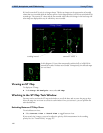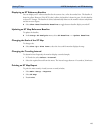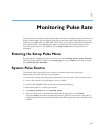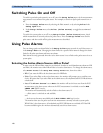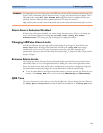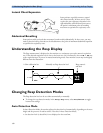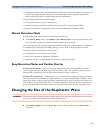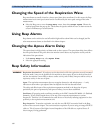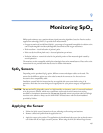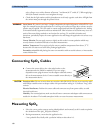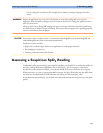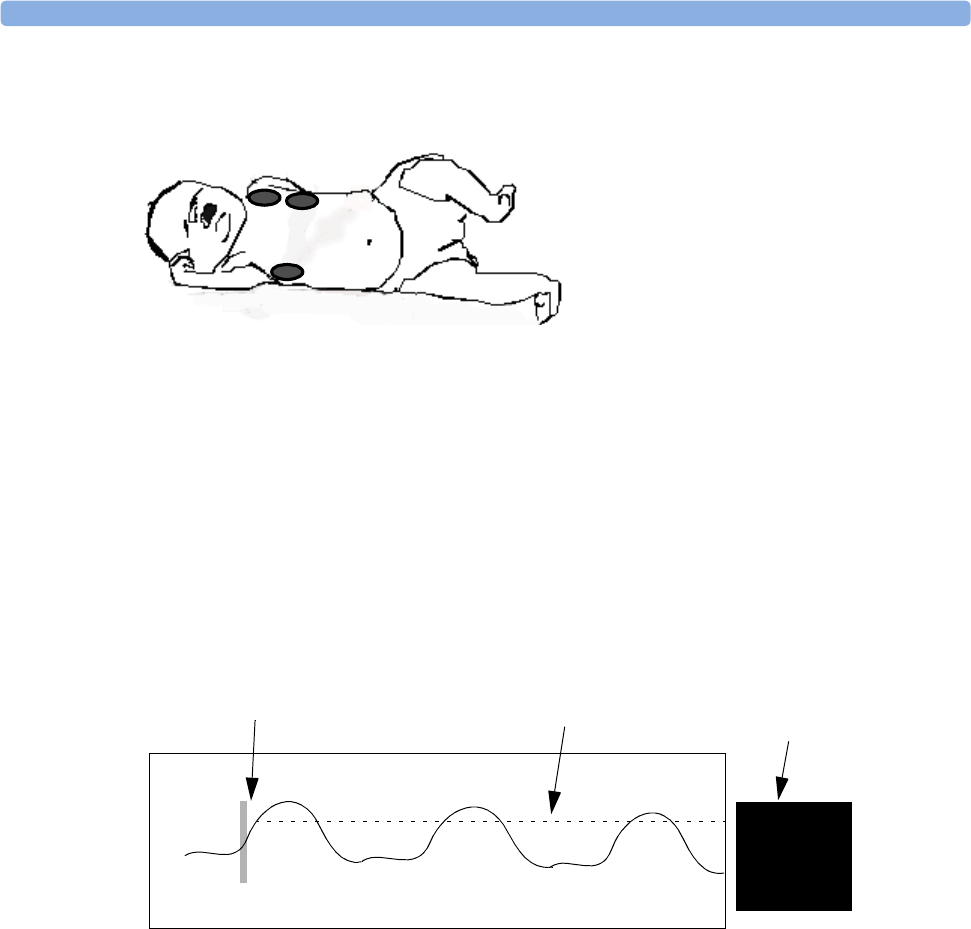
8 Monitoring Respiration Rate (Resp) Understanding the Resp Display
132
Lateral Chest Expansion
Abdominal Breathing
Some patients with restricted chest movement breathe mainly abdominally. In these cases, you may
need to place the left leg electrode on the left abdomen at the point of maximum abdominal expansion
to optimize the respiratory wave.
Understanding the Resp Display
The Resp measurement is displayed on the monitor as a continuous wave and a numeric respiration
rate. If the detected respiration rate is close to the heart rate, this is indicated by the text
HR = RR next
to the respiration wave if you are in manual monitoring mode. Your monitor screen may look slightly
different from the illustration.
Changing Resp Detection Modes
The Resp detection level can be set either automatically or manually.
♦ To change the resp detection mode, in the Setup Resp menu, select Auto/Manual to toggle
between the settings.
Auto Detection Mode
In Auto Detection Mode, the monitor adjusts the detection level automatically, depending on the wave
height and the presence of cardiac artifact. Note that in Auto Detection Mode,
• the detection level (a dotted line) is not displayed on the waveform,
Some patients, especially neonates, expand
their chests laterally. In these cases it is best
to place the two respiratory electrodes in the
right midaxillary and left lateral chest areas at
the patient’s maximum point of breathing
movement to optimize the respiratory wave.
Resp
1 Ohm
22
RR
Manually-set Resp detection level
1 Ohm calibration bar
Resp numeric
and label



